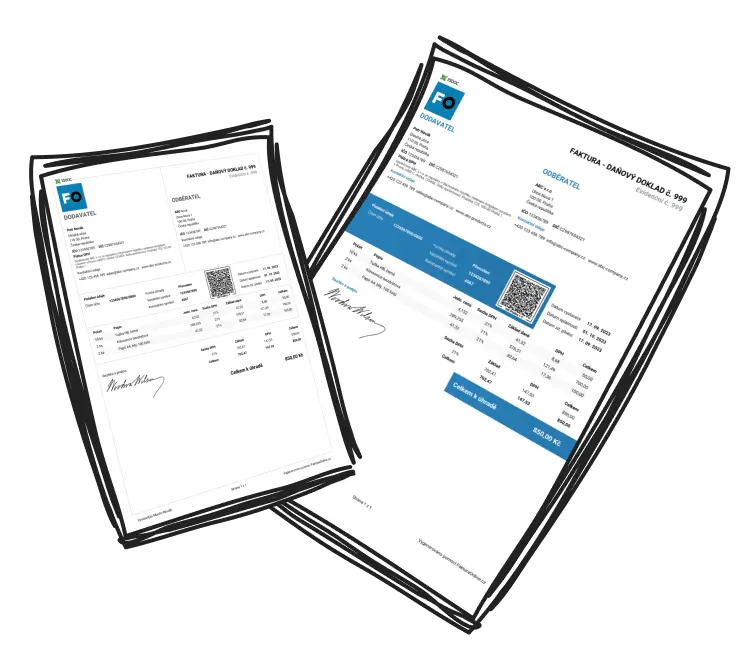What Advance Invoice Tips Should You Follow for Successful Transactions?
To ensure your advance invoices are professional and effective, follow these practical steps:
Important Advance Invoice Tips
Send advance invoices promptly: Delaying these invoices can lead to potential project hold-ups, making timely delivery crucial.
Ensure accuracy: Double-check item descriptions, quantities, and prices. This prevents confusion and builds trust.
Use professional templates: Invoice software like QuickBooks, Xero, or Zoho ensures clear formatting and easier payment tracking.
Clarity and timeliness are the cornerstones of efficient advance invoicing. Prioritizing these tips promotes smooth business operations.
What Advance Invoice Tips Ensure Your Invoice is Detailed?
To create a detailed advance invoice that leaves no room for misunderstandings, follow these steps:
Include essential information: Clearly display your business information, invoice number, and invoice date.
Specify the details: Provide a comprehensive description of the goods or services, including quantities, unit prices, and total costs.
Highlight payment terms: Outline payment methods, currency, due dates, and any late payment penalties.
Add breakdowns: Divide costs into subtotals—e.g., item totals, taxes, and advance paid versus total balance.
Cross-check for alignment: Compare the invoice against the agreement with your client to ensure consistency and accuracy.

Invoice Breakdown Example
- Item A: 10 units x $50 = $500
- Tax (10%): $50
- Advance Payment Requested: $300
- Balance Due: $250
A well-structured and easy-to-understand advance invoice is a key tip for avoiding disputes and building confidence in your business dealings.
Why Do Advance Invoice Tips Emphasize Sending Detailed Invoices?
Sending a detailed advance invoice strengthens your professional relationship with your clients by establishing clear expectations upfront. It reduces the likelihood of payment disputes by providing a comprehensive record of agreed financial and service terms.
Advanced payments also improve your cash flow and assure your clients of transparency, allowing them to process payments faster with confidence. A detailed invoice paves the way for long-term, trust-filled partnerships while safeguarding both parties legally and professionally.
Strong and clear communication through an invoice reflects professionalism and secures trust.
What Advance Invoice Tips Highlight the Key Elements of a Proper Invoice?
To make your invoice effective and legally compliant, include the following key elements:
Invoice number and date: Every invoice should have a unique identifier and issuance date.
Business and client contact details: Include your company name, logo, address, and contact information, along with the client’s details.
Itemized description: Clearly list the products or services, quantities, unit prices, and totals.
Payment terms: Specify accepted payment methods, currency, and payment deadlines.
Advance and remaining balance: Show the portion covered by the advance payment and the remaining amount due.
Additional terms: Include refund policies, cancellation clauses, and expected delivery milestones, if relevant.
Missing any of these details can lead to confusion or delays in project and payment processes.

What Advance Invoice Tips Help Avoid Common Mistakes?
To maintain professionalism and avoid delays, steer clear of these frequent invoicing errors:

Warning
- Wrong title: Always label the document “Advance Invoice” to prevent confusion with a standard invoice.
- Vague descriptions: Clearly detail the goods or services being paid for to avoid disputes.
- Omitting payment terms: Unclear deadlines, penalties, or refund policies can lead to misunderstandings.
- Missing tax details: Correctly itemize applicable taxes (e.g., VAT, GST) to ensure legal compliance.
- Lack of invoice number: Without a unique identifier, tracking payments becomes chaotic.
- Over-complicated designs: Use simple and professional templates to avoid confusing your clients.
By addressing these common pitfalls, you can ensure that your advance invoices are seamless, professional, and promote trust.

